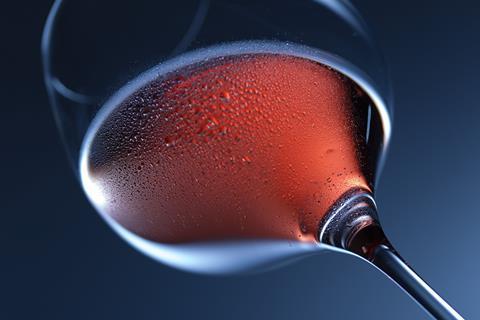A new study of what happens when two different wine yeast starter species are combined suggests that they could be communicating - and that extracellular vesicles may play a role in that communication.

The study by researchers from the Institute for Grapevine and Wine Sciences (ICVV; CSIC- Universidad de La Rioja- Gobierno de La Rioja) in Spain, is outlined in ‘Saccharomyces cerevisiae responds similarly to co-culture or to a fraction enriched in Metschnikowia pulcherrima extracellular vesicles’ which appears in Microbial Biotechnology, published by Applied Microbiology International.
The work was part of the PhD thesis by Miguel Mejias-Ortiz, supervised by Ramon Gonzalez and Pilar Morales and funded by the Spanish Ministry for Science and Innovation.
Yeast of winemakers
“Most winemakers use Saccharomyces cerevisiae starters to ensure good fermentation kinetics and wine quality, “ Professor Gonzalez said.
“Until around 20 years ago, this species was the only one used as a starter for alcoholic fermentation in winemaking. But there is a growing trend for introducing other yeast species (known in the field as non-Saccharomyces) as additional starters, in combination with S. cerevisiae.
“The initial rationale for using these alternative starters was improving aroma quality for product differentiation. However, there are several other advantages currently claimed for using them, including biological control of spoilage yeasts.
“The use of more than one wine yeast starter in the same fermentation process raises the question of whether there are interactions that may affect their performance and the fermentation outcome.”
Extracellular vesicles
In previous work the team have shown that the transcriptomic profile of S. cerevisiae was affected by the presence of other yeasts in the medium, even after very short contact times such as two or three hours. One prominent metabolic pathway affected by the presence of other yeasts was glycolysis.
“Also previously, we showed that wine yeasts of several species release extracellular vesicles to the culture medium. Since extracellular vesicles are known to mediate communication between different cell types in animals or plants, we wondered if this was also the case for interspecific communication between wine yeasts,” Professor Gonzalez said.
This study saw the team concentrating extracellular vesicles from the culture medium of Metschnikowia pulcherrima, a non-Saccharomyces yeast they had previously shown to have a great impact on the transcriptome of S. cerevisiae.
“We then challenged S. cerevisiae cells with either this extracellular vesicle enriched fraction or living M. pulcherrima cells,” Miguel Mejias-Ortiz explained.
“Finally, we compared the transcriptome of these challenged cells with control cells. We found the transcription response of S. cerevisiae was almost identical whether they were confronted to the fraction enriched in extracellular vesicles, or to whole cells.
“In both cases, the transcription profile indicates accelerated carbon metabolism and low expression of autophagy genes. Since the cells are still emerging from the stationary phase, this suggests that the challenged cells are trying to resume growth faster, to outgrow perceived competitors.”
Interspecific communication
The team said this not only constitutes strong evidence of the existence of interspecific communication mechanisms between wine yeasts, but it suggests that extracellular vesicles may play a role in them.
“There are still few reports on the involvement of extracellular vesicles (or other extracellular entities) in interspecific microbial communication, and none in a biotechnological context,” Mr Mejias-Ortiz said.
“So, these findings have a broad interest for our understanding of microbial interactions in general. In addition, being aware of these interactions might help develop better combinations of yeast strains, suited for specific oenological aims (including biocontrol), and better winemaking practices.”
Before any practical application of these findings in winemaking or other biotech areas can be pursued, the team needs to broaden its knowledge on interspecific communication, Professor Gonzalez said.
“For example, it is important to distinguish the role of extracellular vesicles or other components of these vesicle-rich fractions,” he said.
“It would also be interesting analysing the impact of environmental factors on yeast-yeast and yeast-bacterial communication, or studying the involvement of extracellular vesicles in the short-term and long-term adaptation of yeast species to competitive environments.”
‘Saccharomyces cerevisiae responds similarly to co-culture or to a fraction enriched in Metschnikowia pulcherrima extracellular vesicles’ is published in Microbial Biotechnology







No comments yet